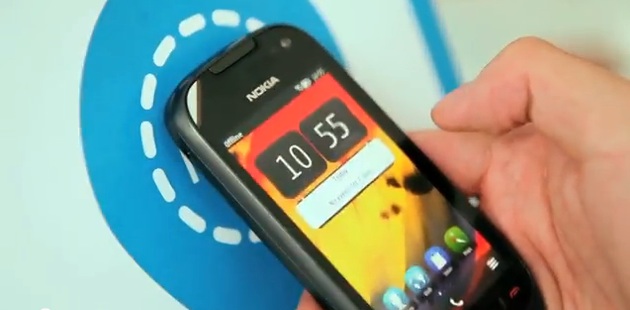In these days of technical innovations, every day a new technology is being discovered, and existing technology is more strengthened, and an old technology is shown the doors. So the most hot and happening technical innovation of these days is Near Field Communication abbreviated as NFC.
NFC might sound alien even to those people who keep themselves updated with technical advancements, and the reasons for this are many, may be NFC had a lousy start as compared to other wireless technologies like Bluetooth, IR etc. Also it took a significant amount of time in productising this technology, and lastly it takes quite a considerable amount of time in winning the faith of the people which is most important for any new invention.
All these factors might have held back the pace of NFC but this situation is no more valid. As international standards have been agreed and published for Near Field Communication (NFC), the whole lot of service providers, content providers and OEMs are on their toes to adopt this new technology.
With this background, my intent of writing this article is to brief you on NFC technology from an end user perspective and not really getting into the intricacies of this technology. So let's understand what NFC is and how this technology helps in enabling services to ensure a smoother life of mankind.
What is NFC?
NFC is a wireless connectivity technology based on well known Radio Frequency Identification (RFID). NFC enables seamless integration of electronic devices by providing safe, simple and intuitive communication path among communicating devices.
How to Establish NFC Connection?
NFC provides the most intuitive way of establishing communication path, and this is achieved through taping two NFC enabled devices. The intent behind taping is to ensure that the two communicating devices should be close to each other by a maximum of four centimeters.
What Happens Behind the Scenes on Taping NFC Enabled Devices?
NFC is based on inductive-coupling, where loosely coupled inductive circuits share power and data over a very short range.
What is the Difference between NFC Enabled Device and an NFC Tag?
NFC device represents an active entity, which operates in reader, writer and peer-to-peer mode. But an NFC tag is a passive entity which just stores information which is read by NFC active devices.
What are the Uses of NFC?
The uses of NFC are categorized into three major sections which are as below:
NFC Reader/Writer Mode
This mode is used basically to read NFC tags to initiate services. The NFC tag is embedded with information in NFC data exchange format, and this data could be some text, an URL or a generic control. After extracting this data, the NFC device will take appropriate actions as to display the text, open specific URL or to receive configuration information.
Here are the real time use cases of this mode.
- NFC tags can be embedded in the posters of each monument in a museum, so that user can just tap on this poster to receive some text or a URL having the complete details about the monument.
- NFC rate tags for all the commodities available for purchase.
- NFC tags can be used on special documents like parking permits, credit cards, and money to prove authenticity. An NFC hologram is copy-resistant and can be made invalid if it is stolen.



NFC Peer-to-Peer Mode
In this mode, NFC is used to enable communication between two devices to exchange data locally. If the amount of data exchanged is small, it is possible to use NFC itself to exchange data as in the case of message transfer, or exchanging a business card.
But if the data to be exchanged is more, NFC just acts as a means of pairing for other wireless technologies like bluetooth or wifi and rest of the data transfer happens on the agreed wireless technology.
Below are the real time use cases of this mode.

- To exchange photos between two NFC devices, the bluetooth pairing is done with the help of NFC and actual content exchange happens through bluetooth.
- NFC enabled bluetooth speakers or earphones can use NFC to establish initial bluetooth connection.
- Printing images through a NFC enabled printer.



NFC Card Emulation Mode
This mode of NFC is used for payment and ticketing. The NFC device will act like an external contactless smart card. This enables contactless payments and ticketing by NFC devices without changing the existing infrastructure.
The NFC device will act like an "electronic Wallet" which replaces, credit, debit, pre-paid and any other magnetic cards which people use for transactions these days.
Below are the real time use cases of this mode.
- Users can pay using e-money stored on their mobile devices at parking lots, shop check-outs, etc.
- NFC devices can act like contactless virtual payment cards.



I hope that through this article, I have put my best offers to give a brief introduction about NFC technology and its wide range of possibilities. So when you plan to buy your next mobile or any other hand held device, ensure that the device is equipped with NFC technology.
That's all for now, " Learn to Tap .... and Tap to learn.... "

